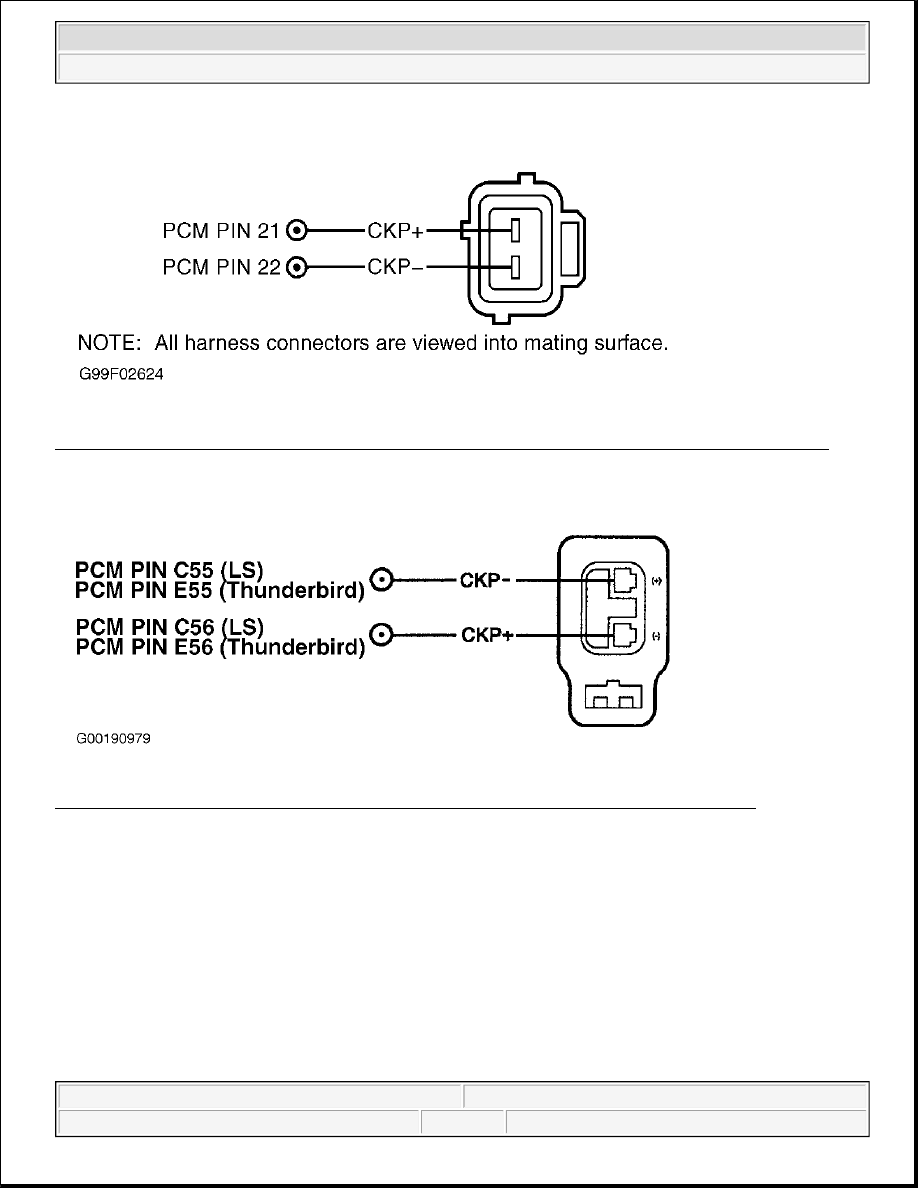Content .. 1534 1535 1536 1537 ..
Ford F150 Pickup. Instruction - part 1536

Fig. 290: Identifying CKP Sensor Circuits & Connector Terminals (Focus 2.3L, Ranger 2.3L & ZX2)
Courtesy of FORD MOTOR CO.
Fig. 291: Identifying CKP Sensor Circuits & Connector Terminals (LS V8 & Thunderbird)
Courtesy of FORD MOTOR CO.
2003 Ford Pickup F150
2003 ENGINE PERFORMANCE Self-Diagnostics - CNG, Flex-Fuel & Gasoline